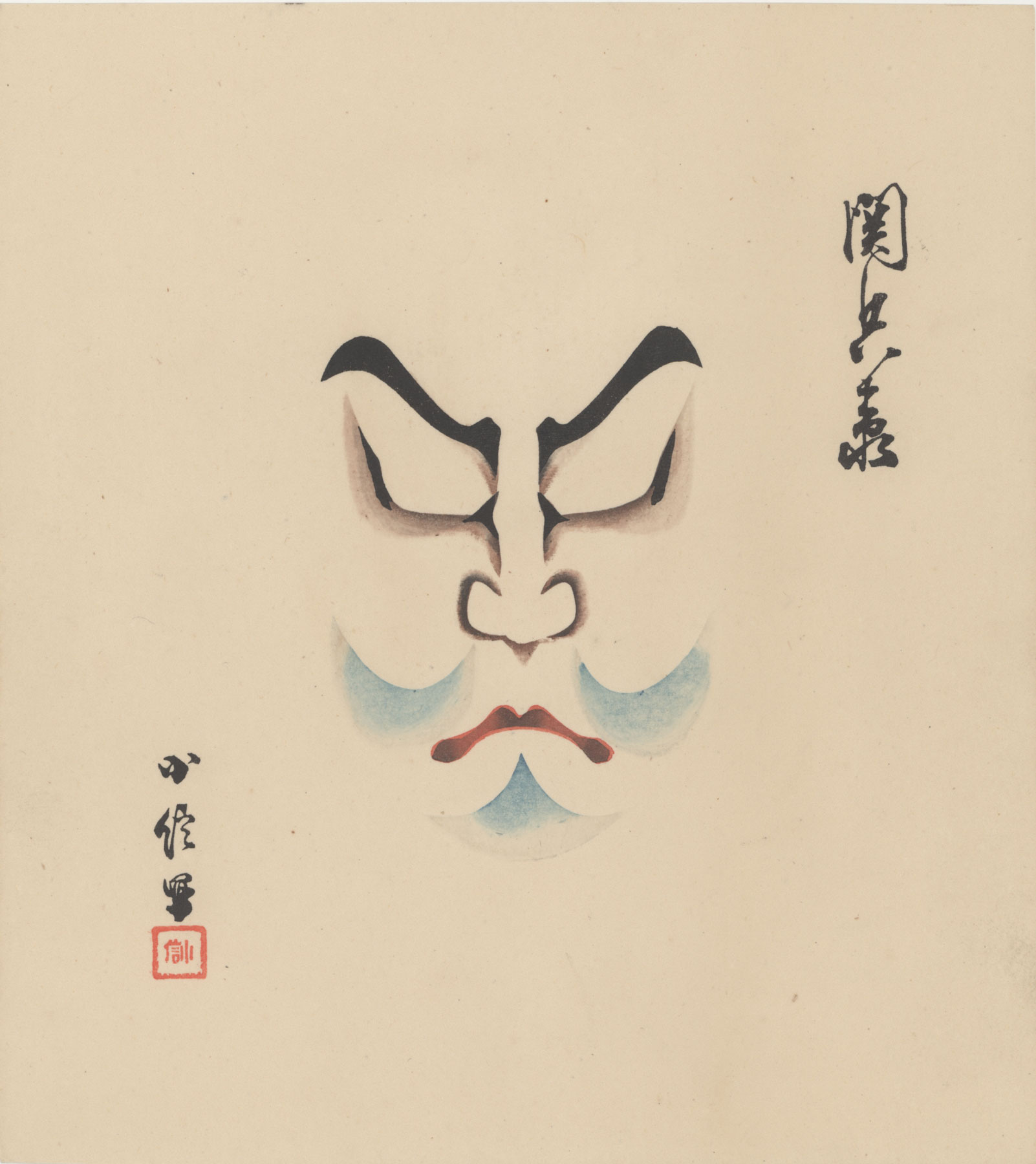About This Print
Picturing the kumadori makeup for the kabuki character Sekibei, this print is one of ten in the second set (or "collection") of ten prints that the publisher intended to issue in monthly installments for ten months, making for a total of one hundred prints when complete. The prints were designed by the artist Hasegawa Sadanobu III (Konobu III) (1881-1963) and issued in 1925 by the publisher Hangakai hanmoto. The folder containing this collection's second set of ten prints is pictured below..About Kumadori
Kumadori is the stylized exaggerated makeup used in the kabuki theater particularly when performing in the bold and bombastic aragoto style. Kumadori makeup generally consists of brightly colored stripes or patterns over a white foundation, the colors and patterns symbolizing aspects of the actor's character. The three basic colors, other than black, are red (denoting a hero), blue (denoting an evil character) and brown (denoting a supernatural character).
Source: Kabuki: A Pocket Guide, Ronald Cavaye, Tuttle Publishing, 1993
Kabuki makeup (kesho) may be separated into two distinct types: the standard makeup employed for the majority of characters and "kumadori", used for superheroes and villains and seen most frequently in the aragoto acting style. As Kabuki developed as an art, so too did "kumadori". At one time there may have been over one hundred different types in use. Today there are far fewer, with only ten or fifteen being commonly seen. Styles range from the subtle lip rouge and eye highlights of the "mukimi-guma" style for the famous role of "Sukeroku", to the more complex nihon suji-guma for "Gongoro", the hero of "Shibaraku". After the lines are painted on with a brush or the fingertip, the hard lines are smudged with the finger to soften and blend them into the white base.
About the Series Kumadori Makeup in Kabuki
First issued in 1925 by the Kyoto publisher Hangakai hanmoto 畫會版元, each print shows a differentkumadori for the kabuki stage. Each print bears the signature Konobu ga 小信画 and the name of the character associated with the pictured makeup. The editing/compiling of the collection is credited to Eikichi Hayashi 榮吉林. While the publisher intended to issue one hundred prints, I have only seen approximately fifty prints, making it unclear if all the prints were actually issued.
| Envelope for the 2nd collection of ten prints, reading: 歌舞伎 隈取百面種 第二集 Collection of One Hundred Kumadori Makeups in Kabuki, Collection 2 | Colophon pasted to inside of envelope. The colophon provides the publisher's name and address, the editors name, dates of printing and issuance, and details of distribution. |
Print Details
| IHL Catalog | #1441 |
| Title or Description | Sekibei 関兵衛 |
| Series | Collection of One Hundred Kumadori Makeups in Kabuki, Collection 2 Kabuki Kumadori hyakumenshū daini shū 歌舞伎 隈取百面種 第二集 |
| Artist | Hasegawa Sadanobu III (Konobu III) (1881-1963) |
| Signature |  |
| Seal | see above |
| Publication Date | 大正十四年十月十五日發行 Taishō 14th year, 10th month, 15th day, issued October 15, 1925 |
| Publisher | 板畫會版元 [板画会版元] Hangakai hanmoto |
| Impression | excellent |
| Colors | excellent |
| Condition | excellent - slight overall toning |
| Genre | shin hanga; kabuki-ga |
| Miscellaneous | |
| Format | koban |
| H x W Paper | 7 7/8 x 7 1/16 in. (20 x 17.9 cm) |
| Literature | |
| Collections This Print |




